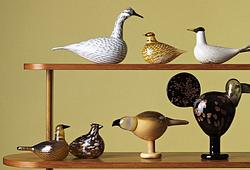BUDAI, brons, spår av lack och förgyllning. Mingdynastin, daterad till Jiajings femte regeringsår (motsvarande 1526).
Sittande på en lotustron vars nedre del med avgjutningar av mynt (en del från Songdynastin), i sin högra hand håller han ett radband och den vänstra vilande på knäet. Han är klädd i en rock med ett vacker graverat mönster av lotusslingor. Det glada ansiktsuttrycket skänker skulpturen en air av livfullhet och glädje. Baksidan med datering (tredje månaden under det fjärde året av Jiajing, d.v.s. 1526) samt med långa inskriptioner av namn på donatorer (ca 60 stycken). Höjd 56 cm.
Slitage, skador och lagningar.
Proveniens
Sold at Bukowskis sale 583:548, then from the Collection Anders Hellström (1877-1940)
An industry leader best known for his work as managing director and chief executive of the paper and cardboard manufacturer AB Papyrus between the years 1912-1940.
In addition to his daily work, he spent a lot of his time on cultural work.
With his practical abilities associated Hellström vast cultural interests it came in handy with his skills in maintaining communication with representatives of science and art. In a number of artistic and scientific-acting compounds, he played a leading role,
in particularly the ancient Chinese art that was his main interest. The outstanding collection of Chinese bronzes he had acquired over the years, would in professional circles receive the highest appreciation. A few years after his death, part of his collection became donated to the museum of Far Eastern Antiquities in Stockholm.
Utställningar
Compare with another dated buddai, sold at Christies, 15706 Fine Chinese Ceramics and Works of Art, lot no 1134. Dated to 1428. Stephen Junkunc, III (1904-1978) Collection
Litteratur
To read about Hellströms bronze collection, see; Litterature published by Professor Bernhard Karlgren in 1948 in “Bronzes in the Hellström Collection”.
Övrig information
Buddhist figures from the Jiajing period are rare. The Jiajing emperor was a devoted follower of Daoism and attempted to suppress Buddhism however he could and that is why Buddhist figures from his era are comparably few in number. Inscribed examples are particularly rare. This imposing figure is also notable for its large size.
According to Chinese history, Budai was an eccentric Chan monk (Zen) who lived in China in the beginning of the 10th Century. His Buddhist name was Qieci (literally: "Promise this"), and he was considered a man of good and loving character.
Budai carries his few possessions in a cloth sack, being poor but content. He is often depicted entertaining or being followed by adoring children. His image graces many temples, restaurants, amulets, and businesses being a symbol for happiness, prosperity and wealth.
Budai is usually identified with or seen as an incarnation of Maitreya, the future Buddha, so much so that the Budai image is one of the main forms in which Maitreya is depicted in East Asia. Since he is almost always shown smiling or laughing, his popular nickname in Chinese is the Laughing Buddha.



















































